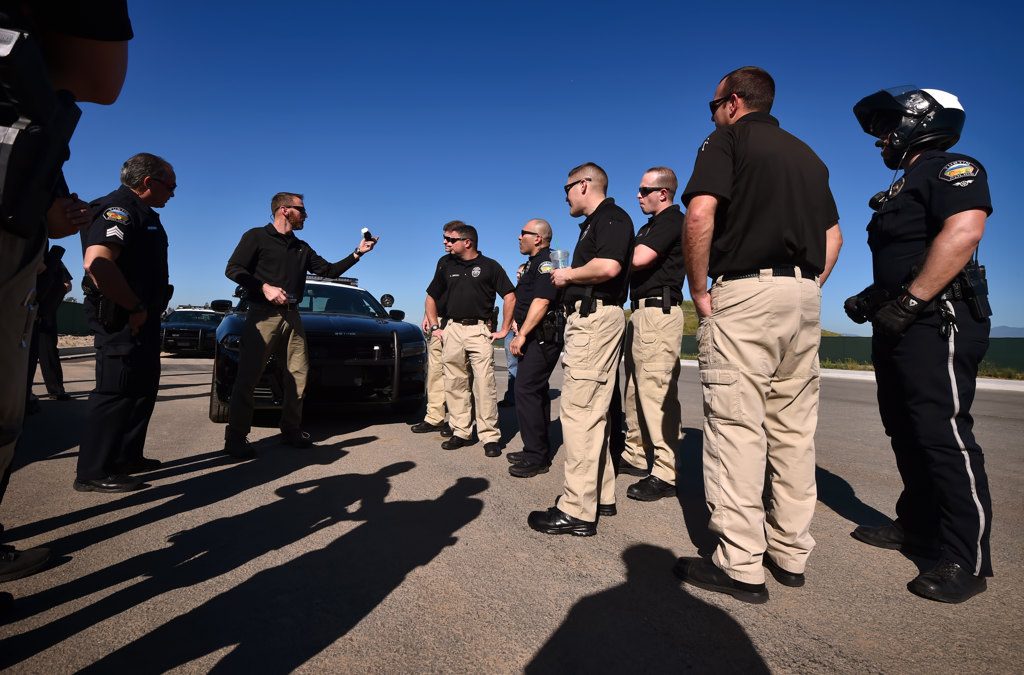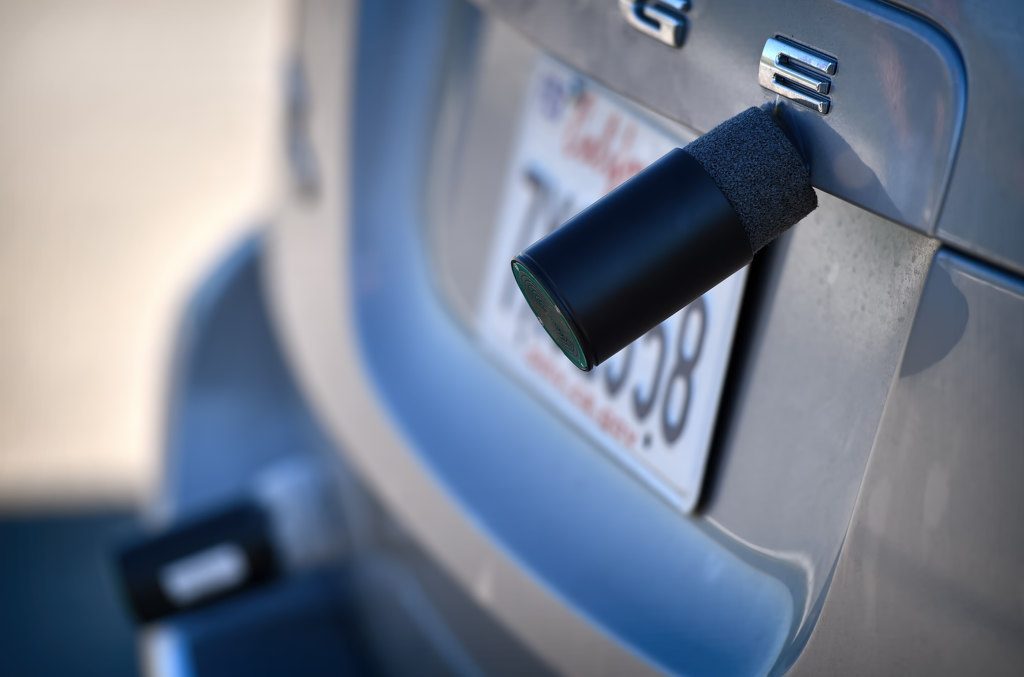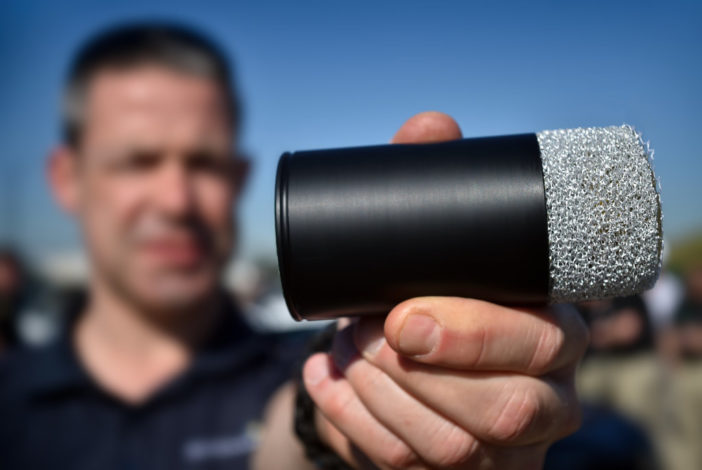On a closed street near the blimp hangars in Tustin, a TPD patrol car speeds up in pursuit of a white Dodge Caravan.
30 mph. 40 mph. 50 mph.
The patrol car stays within manageable sight of the van when suddenly, the occupants in the fleeing vehicle hear a distinct sound.
Thump.
To the occupants in the suspect vehicle it sounds like a tennis ball hitting the back of the van.
Once the device has been successfully deployed, the police vehicle drops back from the pursuit.
Training run successful.

Tustin PD officers undergo training for the new StarChase vehicle tagging system.
Photo by Steven Georges/Behind the Badge OC
In a first for a law enforcement agency in Southern California, the Tustin PD is in the process of training its officers to use a pursuit-mitigation device called StarChase, in which an officer fires a GPS tag from a launcher mounted on the grill of the patrol car to track a fleeing suspect, avoiding the need to pursue the vehicle.
The point is to reduce the risks involved in pursuits and improve safety for officers, suspects and the general public.
The TPD recently showed several field training officers (FTOs) how to use StarChase (starchase.com). They practiced deploying the GPS tags by pushing a button on their dashboard consoles while in pursuit of the suspect’s vehicle. The training also included classroom instruction.
Over the next month, the TPD will be training all its officers on the technology. TPD patrol vehicles will be equipped with StarChase.
Lt. Brian Greene has overseen this project from its inception. “This gives us another tool to manage dangerous situations,” Greene said.
Police agencies in the Northern California and Northern Washington already use StarChase, said Dave Respess, director of field operations and training at StarChase LLC.
The Tustin PD started looking into the technology about a year ago. There are fewer than 100 law enforcement agencies nationwide using StarChase, Respess said.
“Chief (Charlie) Celano is very big on technology and in using technology to make our agency operate more efficiently and effectively,” Greene said.
Here’s how StarChase works:
A launcher mounted on the front of a patrol car uses a laser to target a fleeing car. The launcher uses compressed air to deploy a cylinder whose end is covered in an adhesive containing a GPS locator and a transmitter.

GPS projectiles, shot from a patrol car, stick to a car during a training session for Tustin PD officers.
Photo by Steven Georges/Behind the Badge OC
Once the GPS cylinder is attached to a fleeing car, dispatchers and fellow TPD patrol officers can track the location and movement of the fleeing car on a secure web-based mapping portal.
This means officers can rely on additional tactical strategies other than chasing a suspect, often at dangerously high speeds, to apprehend the suspect.
The adhesive doesn’t cause permanent damage to car paint, Respess noted.
“I love it,” TPD Sgt. Andy Birozy said of StarChase. He and Sgt. Mike Van Cleve, under the supervision of Greene, are overseeing the rollout of StarChase at the TPD.
“I think it’s a great idea,” Birozy added. “I think it could save officers’ lives and the lives of the general public.”
The TPD engages in an average of about 10 vehicle pursuits a year, Birozy said.
Every police vehicle pursuit does have an element of danger and the Tustin PD has existing policies and procedures in place for the officers regarding involvement in pursuits. Those policies and procedures are designed to help mitigate risks involving pursuits, and now StarChase will be one of those available options.
During the recent TPD training session, Greene noticed the excitement on the faces of the officers who participated.
“To see the smiles on their faces,” Greene said, “to give them the tools they need to do their jobs safer, that’s what it’s all about.”
 Behind the Badge
Behind the Badge



